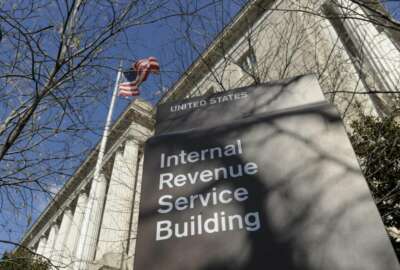
Explainer
What to know about evacuation payment authority during the coronavirus
At least one agency has issued an "evacuation order" for its employees to work from home during the coronavirus pandemic, regardless of their previous telework...
There have been no shortage of memos, guidance and other documents on telework, leave and other flexibilities for federal employees during the coronavirus pandemic.
A few memos from the Office of Personnel Management have described a scenario called an “evacuation payment authority,” probably a relatively obscure term for the average federal employee.
Under OPM regulations, agencies can use evacuation payment authority only under a specific circumstance — if the World Health Organization has declared a pandemic health crisis.
WHO declared the coronavirus a global pandemic on March 11.
This authority allows agencies to order their employees to evacuate their usual worksites and work from home, or another determined “safe haven” during a pandemic. Nearly all employees can be asked to evacuate, even those who don’t have an active telework agreement at the time the order is made.
While OPM carries the regulations, it’s up to each individual agency to issue a written or oral evacuation order to all employees or specific categories of employees.
The IRS was one of the first agencies to use the authority, when it ordered its employees last week to evacuate their office buildings and work from home.
Many more agencies could make similar orders in the coming days and weeks, if they know how to use evacuation payment authority.
What does an evacuation order mean for me?
Because evacuation payment regulations allow agencies to order all employees to work from home regardless of their existing telework arrangement, supervisors can assign tasks regardless of an employee’s grade or title.
“An agency may not assign work to an employee unless the agency knows the employee has the necessary knowledge and skills to perform the assigned work,” OPM’s March 7 guidance reads.
If agencies don’t have work to assign to an evacuated employee, that individual should go on weather and safety leave, OPM said.
Evacuated employees will be paid as they usually would, including any overtime, premium pay or other differentials.
OPM said agencies may, on a case-by-case basis, offset the additional expenses employees might incur, such as internet service or the purchase of a computer, for working at home.
Evacuated employees who become sick or want to take personal time off while working at home must take sick or paid leave as they normally would, OPM said.
Evacuation orders and childcare
Several agencies, including OPM, have attempted to clarify how employees should continue to work and care for their children at home during the coronavirus pandemic.
The messages have varied and depend on the agency in some cases. But under an evacuation payment authority, the message is more clear.
“OPM evacuation payment regulations do not prohibit an evacuated employee from working from home during a pandemic health crisis with children in the home,” the agency’s March 19 guidance reads.
A March 27 fact sheet from OPM is more expansive.
Agencies should be flexible in allowing their employees to telework and take on childcare duties at the same time, OPM said. Employees may, as OPM acknowledged, shift their hours earlier or later than normal to account for a full work day and their childcare responsibilities. They may perform some work on days where they’re not usually scheduled to be on the clock.
This guidance applies for most federal employees, whether they’ve been ordered to “evacuate” or are simply working from home during the coronavirus pandemic.
Employees who have been ordered to evacuate may, depending on their situation, have an additional option.
“When an employee is evacuated to his or her home in a pandemic situation, the administration expects agencies to maximize the performance of telework to support agency missions,” the OPM guidance reads. “At the same time, it may be appropriate to grant limited amounts of excused absence in certain circumstances.”
Agencies are supposed to use these excused absences sparingly, OPM said. They could be used for telework-eligible employees in the following circumstances:
- An employee has children whose elementary or secondary school is closed due to the coronavirus pandemic,
- An employee has children who are young and not of school age, and normal childcare arrangements are unavailable because of the pandemic, and
- An employee has other family members, such as an adult child or elderly parent with special needs, who requires additional care and attention.
What is weather and safety leave?
Weather and safety leave is paid. It acknowledges a scenario that’s outside of an employee’s control.
It’s a relatively new term, born out of the Administrative Leave Act. Congress created four categories of leave under the 2016 law, including a revamped administrative leave, investigative leave, “notice leave” and “weather and safety leave.”
The goal was to create new types of leave for employees whose personnel or performance actions are under investigation by their agencies, rather than one catch-all form of paid time off. Previously, employees spent days — sometimes more than a year — on paid leave while their agencies investigated their conduct or performance.
OPM still hasn’t released the regulations needed to implement “notice” or “investigative” leave.
But weather and safety leave regulations have been out for two years.
In general, OPM’s regulations allow agencies to grant weather and safety leave due to an “act of God”: a terrorist attack or other emergency condition that prevents employees from safely traveling to or performing work at the office or other work site.
The current coronavirus pandemic certainly fits the “act of God” description.
In the past, OPM has recommended weather and safety leave for non-teleworkers in the national capital region during a snow storm or other weather event.
Today, agencies are granting weather and safety leave for employees who can’t work remotely but have been instructed not to come to their office or official worksite for reasons related to the coronavirus.
Find OPM’s employee resources, FAQs and other guidance on the coronavirus pandemic here.
Copyright © 2025 Federal News Network. All rights reserved. This website is not intended for users located within the European Economic Area.
Nicole Ogrysko is a reporter for Federal News Network focusing on the federal workforce and federal pay and benefits.
Follow @nogryskoWFED





